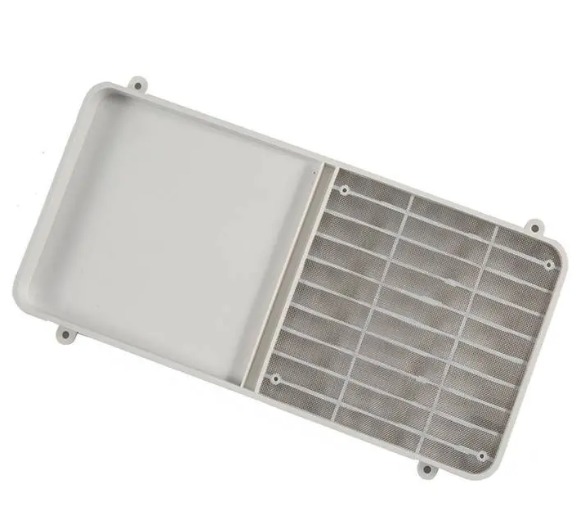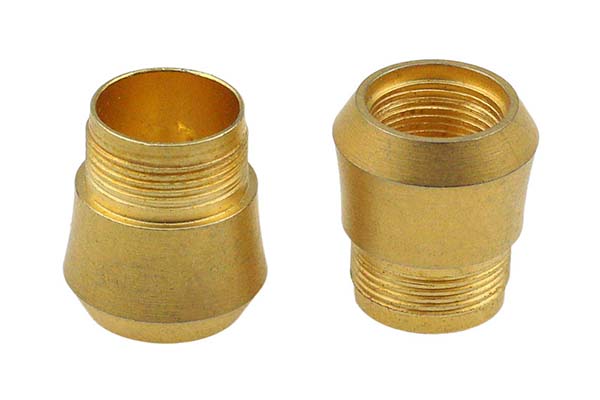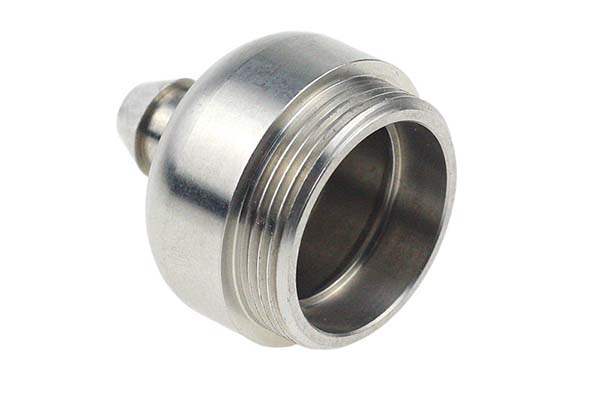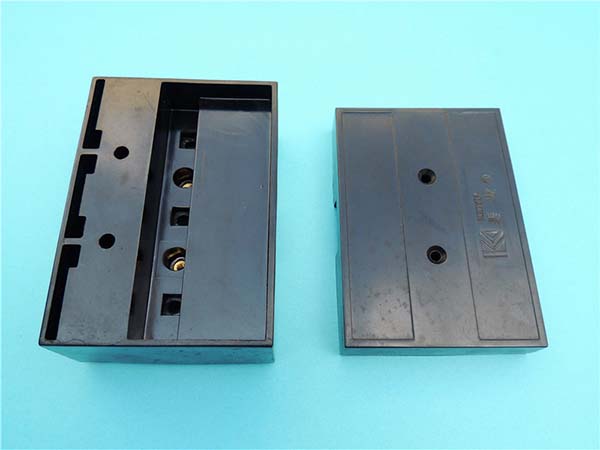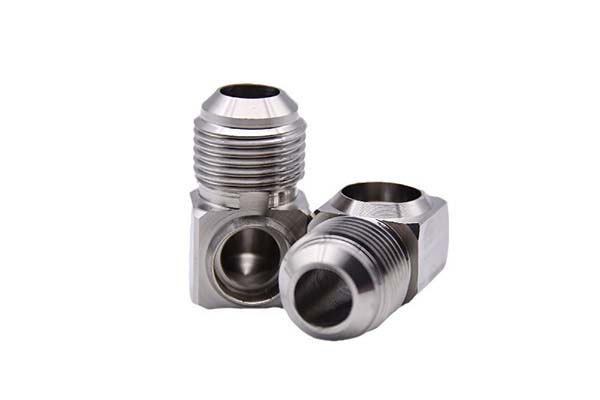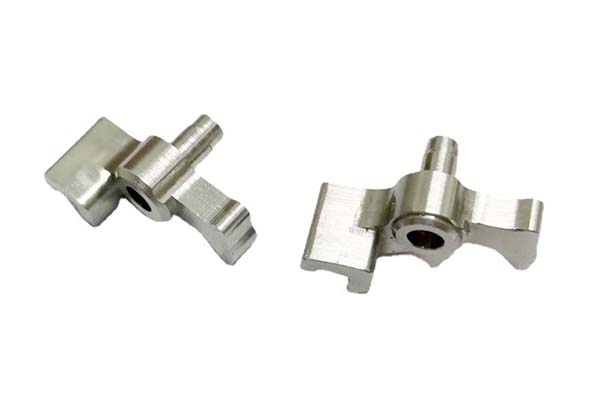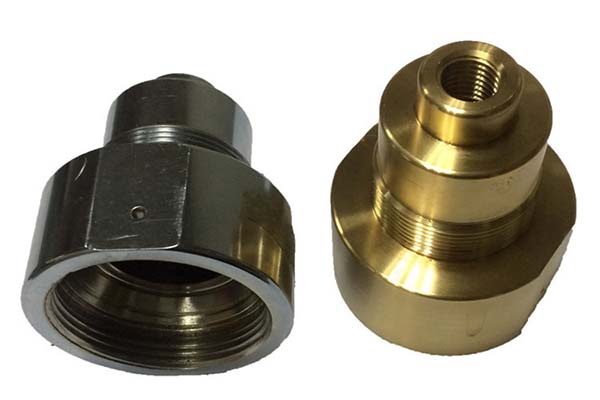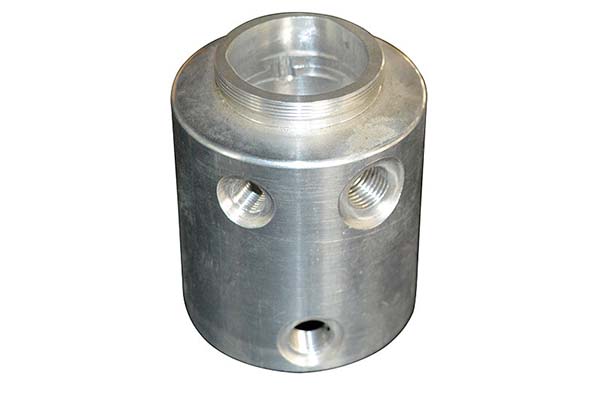In the world of precision manufacturing, CNC machining of C11000, also known as Electrolytic Tough Pitch (ETP) Copper, presents both unique opportunities and challenges. C11000 copper is highly sought - after in numerous industries due to its remarkable properties. However, machining it requires a deep understanding of its characteristics, optimal machining parameters, suitable tooling, and effective post - processing techniques. Let's explore each of these aspects in detail.
Alloy Overview & Key Properties
C11000 copper is a high - purity alloy, with copper content typically reaching 99.9%. This high purity contributes to its outstanding electrical and thermal conductivity. It has an electrical conductivity of 101% IACS (International Annealed Copper Standard), making it an ideal choice for electrical applications where minimal resistance is crucial. For example, in power transmission lines, the high conductivity of C11000 reduces energy losses during the transfer of electricity.
The alloy contains a small amount of oxygen, usually in the range of 0.02 - 0.04%. While this oxygen content is low, it has a significant impact on the alloy's properties. It helps in controlling the formation of defects during the manufacturing process and contributes to the alloy's work - hardening behavior.
C11000 copper has a density of 8.89 g/cm³. This relatively high density is important to consider when designing components, as it affects the weight and mass distribution of the final product. In applications such as aerospace, where weight is a critical factor, the density of the material needs to be carefully evaluated.
Thermally, C11000 is highly conductive, with a thermal conductivity of 391 W/m·K. This property makes it perfect for heat - sink applications, where it can quickly transfer heat away from a heat - generating source. In electronic devices like CPUs, heat sinks made of C11000 copper help in maintaining optimal operating temperatures, preventing overheating and ensuring reliable performance.
When it comes to machinability, C11000 has a soft gummy nature, with a machinability rating of around 20%. This means that it can be challenging to machine compared to some other materials. The work - hardening rate of C11000 is also a factor to consider. As the material is worked, it hardens, which can affect subsequent machining operations. To counteract this, proper annealing is often required. The recommended anneal temperature for C11000 is around 350 °C. Annealing helps to relieve internal stresses and restore the material's ductility, making it easier to machine.
CNC Machining Parameters & Techniques
Cutting Speed
Determining the right cutting speed is crucial when machining C11000 copper. If the cutting speed is too low, the material may smear or adhere to the tool, leading to a poor surface finish and reduced tool life. On the other hand, if the speed is too high, excessive heat can be generated, causing the tool to wear rapidly. For general machining of C11000, a cutting speed in the range of 200 - 500 m/min is often recommended. However, this can vary depending on factors such as the type of operation (turning, milling, etc.) and the tool material. For example, when using carbide tools, higher cutting speeds can be achieved compared to high - speed steel tools.
Feed Rate
The feed rate for ETP copper should be carefully selected to ensure efficient chip formation and a good surface finish. A slow feed rate may result in the formation of stringy chips, which can be difficult to manage and may also cause surface defects. A fast feed rate, however, can put excessive stress on the tool and the workpiece. In most cases, a feed rate of 0.1 - 0.3 mm/rev is suitable for turning operations, while for milling, a feed per tooth of 0.05 - 0.15 mm/tooth can be used.
Depth of Cut (DOC)
When machining thin - walled components from C11000 copper, optimizing the depth of cut is essential. A large depth of cut can cause the thin walls to deform due to the high cutting forces. For thin - wall applications, a DOC of 0.1 - 0.5 mm is often preferred. This helps in maintaining the integrity of the thin - walled structure while still allowing for efficient material removal.
Chip Control
One of the challenges in machining C11000 is dealing with stringy chips. These long, continuous chips can wrap around the tool and the workpiece, causing damage and interfering with the machining process. To control chip formation, techniques such as using chip - breaking inserts or modifying the cutting parameters can be employed. For example, reducing the feed rate slightly while increasing the cutting speed can sometimes encourage the formation of shorter, more manageable chips.
High - Speed Machining
High - speed machining of copper can offer several advantages, such as higher productivity and better surface finish. However, it also requires careful consideration of factors like tool balance and coolant application. When machining C11000 at high speeds, the toolholder balance should be maintained within < 0.005 mm, and runout should be controlled to < 0.0002". This helps in minimizing vibration and ensuring accurate machining.
Built - up Edge Prevention
C11000 copper has a tendency to form a built - up edge (BUE) on the cutting tool. A BUE can deteriorate the surface finish and reduce the tool's cutting efficiency. To prevent BUE formation, using sharp tools with a proper rake angle and applying an appropriate coolant are effective strategies. Coolants can help in reducing the temperature at the cutting edge, which in turn minimizes the adhesion of copper to the tool.
Trochoidal Milling
Trochoidal milling can be an effective technique for machining C11000 copper, especially when working with complex geometries or when high - speed machining is required. This milling strategy involves the tool following a trochoidal path, which helps in reducing the cutting forces and improving tool life. It is particularly useful for roughing operations, as it allows for efficient material removal while keeping the tool in good condition.
Coolant: Flood vs Mist
The choice between flood and mist coolant application can significantly impact the machining of C11000. Flood coolant is effective in removing heat and chips from the cutting area, providing good overall cooling. It is suitable for heavy - duty machining operations where a large amount of heat is generated. Mist coolant, on the other hand, can provide a more targeted cooling effect and is often preferred for high - speed machining. It can also be more environmentally friendly as it uses less coolant. However, it may not be as effective in removing chips as flood coolant.
Tool Life
Tool life is a critical factor in CNC machining of C11000. Due to the material's gummy nature and high thermal conductivity, tools can wear out relatively quickly. By optimizing the cutting parameters, using the right tool material, and applying appropriate coolant, tool life can be extended. For example, carbide tools with a polished surface can reduce the adhesion of copper and increase tool life compared to unpolished tools.
Tooling & Edge Geometry
Polished Carbide Inserts
Polished carbide inserts are a popular choice for machining C11000 copper. The polished surface reduces the friction between the tool and the workpiece, minimizing the formation of a built - up edge. These inserts can withstand high cutting temperatures and offer good wear resistance, making them suitable for a variety of machining operations.
Zero - rake High - positive Geometry
A zero - rake high - positive geometry is often recommended for cutting C11000 copper. This geometry helps in reducing the cutting forces and promoting smooth chip flow. The positive rake angle allows the tool to penetrate the material more easily, while the zero - rake helps in maintaining the strength of the cutting edge.
Single - flute Endmills
Single - flute endmills can be effective for machining C11000, especially in applications where precise control over chip evacuation is required. The single - flute design allows for a larger chip gullet, which can accommodate the stringy chips of copper more effectively. This helps in preventing chip clogging and ensures a smooth machining process.
PCD Diamond Tools
Polycrystalline diamond (PCD) tools are extremely hard and wear - resistant, making them ideal for high - precision machining of C11000 copper. They can achieve very fine surface finishes and are often used in applications where tight tolerances are required, such as in the production of optical components or high - end electrical connectors.
Micro - grain Carbide Micro - mills
For micro - machining of C11000, micro - grain carbide micro - mills are a great option. These mills have a fine grain structure, which gives them excellent strength and wear resistance at a small scale. They can be used to create intricate features with high precision, such as in the manufacturing of micro - electronics components.
Toolholder Balance and Runout Control
As mentioned earlier, maintaining a toolholder balance of < 0.005 mm and runout control of < 0.0002" is crucial for accurate machining of C11000. Imbalances in the toolholder can cause vibration, which can lead to poor surface finish, reduced tool life, and inaccurate dimensions. Regular checking and adjustment of the toolholder balance and runout are essential for consistent and high - quality machining.
Surface Finish & Post - Processing
Ra 0.05 µm Turning
Achieving a surface finish of Ra 0.05 µm in turning operations on C11000 copper requires careful attention to the machining parameters and tool selection. Using sharp tools, proper cutting speeds, and feed rates, along with effective coolant application, can help in obtaining such a fine surface finish. This level of surface finish is often required in applications where the component will be used in contact with other precision parts or in environments where a smooth surface is necessary for functionality.
Mirror Polish ETP Copper
Mirror polishing of ETP copper can be achieved through a series of grinding and polishing steps. First, coarse grinding is used to remove any surface imperfections, followed by progressively finer grinding and polishing operations. Specialized polishing compounds and techniques are employed to achieve the highly reflective mirror - like finish. This type of finish is often desired for decorative applications or in components where a low - friction surface is required.
Ultrasonic Cleaning
After machining, ultrasonic cleaning is an effective method for removing contaminants from the surface of C11000 copper components. Ultrasonic waves create tiny bubbles in a cleaning solution, which collapse and generate high - energy shockwaves. These shockwaves dislodge dirt, oil, and other contaminants from the surface of the workpiece, leaving it clean and ready for further processing or assembly.
Oxide Removal with Citric Acid
C11000 copper can form an oxide layer over time, especially when exposed to air or certain environments. Citric acid can be used to remove this oxide layer. The acid reacts with the copper oxide, converting it into a soluble copper citrate complex, which can then be easily washed away. This process helps in restoring the natural luster of the copper and also improves its electrical conductivity.
Tarnish Protection with Antioxidant
To prevent tarnishing of C11000 copper, applying an antioxidant coating is a common practice. Antioxidants work by inhibiting the oxidation process that causes tarnish. These coatings can be in the form of sprays, dips, or wipes and can provide long - term protection against tarnish, especially in applications where the copper component will be exposed to the elements.
Deburring Gummy Burrs
Deburring is an important post - processing step for C11000 copper components. Due to its gummy nature, copper can form burrs during machining. These burrs can be removed using various methods, such as hand deburring with files or abrasive tools, or using automated deburring machines. Special care needs to be taken to ensure that the deburring process does not damage the surface finish of the component.
Superfinish for Electrical Contacts
For components used as electrical contacts, a superfinish is often required to ensure reliable electrical connection. Superfinishing involves using extremely fine abrasive materials to achieve a surface finish with a very low roughness value. This helps in reducing contact resistance and improving the overall performance of the electrical contact.
Applications & Industry Examples
C11000 Busbars CNC
In the electrical power distribution industry, C11000 copper is widely used to manufacture busbars through CNC machining. Busbars are used to distribute electrical power within a switchgear, panelboard, or other electrical distribution equipment. The high electrical conductivity of C11000 ensures efficient power transfer, while its good machinability allows for the production of busbars with precise dimensions and smooth surfaces, which are crucial for reliable electrical connections.
RF Waveguides ETP Copper
ETP copper is an excellent material for manufacturing RF waveguides. RF waveguides are used to guide radio - frequency electromagnetic waves in applications such as telecommunications, radar systems, and satellite communication. The high electrical conductivity of C11000 minimizes signal loss within the waveguide, ensuring efficient transmission of the RF signals. CNC machining allows for the production of waveguides with complex geometries and tight tolerances, which are necessary for optimal performance.
Heat Sinks with High - Conductivity
As mentioned earlier, the high thermal conductivity of C11000 makes it an ideal material for heat sinks. In the electronics industry, heat sinks are used to dissipate heat generated by components such as CPUs, GPUs, and power transistors. CNC - machined C11000 heat sinks can be designed with intricate fin patterns to maximize the surface area for heat transfer. These heat sinks play a vital role in maintaining the operating temperature of electronic components, ensuring their long - term reliability.
Grounding Straps
Grounding straps made of C11000 copper are used to provide a low - resistance path for electrical current to flow to the ground. In electrical and electronic systems, proper grounding is essential for safety and to prevent electrical malfunctions. The high conductivity of C11000 ensures that any electrical faults are quickly and safely directed to the ground. CNC machining can be used to produce grounding straps with specific lengths, widths, and thicknesses to meet the requirements of different applications.
Power Semiconductor Bases
C11000 copper is often used as the base material for power semiconductors. The base provides mechanical support to the semiconductor die and also acts as a heat sink, dissipating the heat generated during the operation of the semiconductor. The high thermal and electrical conductivity of C11000 make it an ideal choice for this application. CNC machining allows for the precise shaping of the power semiconductor bases to fit the specific requirements of the semiconductor device.
Electrical Connector Pins
Electrical connector pins made of C11000 copper are used to establish electrical connections between different components in electronic devices. The high electrical conductivity of the copper ensures low - resistance connections, while its good machinability allows for the production of pins with precise dimensions and smooth surfaces. This is important for ensuring reliable electrical contact and preventing signal interference.
Artistic Copper Sculptures (Case Study)
In the world of art, C11000 copper has been used to create stunning sculptures. For example, a recent project involved using CNC machining to shape C11000 copper sheets into intricate forms for a large - scale outdoor sculpture. The softness and malleability of the copper, combined with the precision of CNC machining, allowed the artist to bring their vision to life. The high - quality surface finish achieved through post - processing techniques such as polishing added to the aesthetic appeal of the sculpture.
Yigu Technology, as a parts custom manufacturing Supplier, understands the nuances of CNC machining C11000 (ETP Copper). Our experienced engineers are well - versed in optimizing machining parameters to ensure high - quality results. We use state - of - the - art equipment and the latest tooling technologies to achieve tight tolerances and excellent surface finishes. Whether it's producing complex components for the electronics industry or creating custom - designed parts for artistic applications, Yigu Technology is committed to delivering top - notch products that meet the highest standards.
FAQs
- What is the best tool material for machining C11000 copper?
- Carbide tools, especially polished carbide inserts, are a popular choice due to their high hardness and wear resistance. PCD diamond tools are also excellent for high - precision applications. However, the choice also depends on factors like the type of machining operation and the desired surface finish.
- How can I improve the surface finish when machining C11000 copper?
- Using sharp tools with the right geometry, optimizing cutting parameters such as speed and feed rate, applying an appropriate coolant, and performing proper post - processing like polishing can all contribute to a better surface finish.
- Can C11000 copper be welded after CNC machining?
- C11000 copper can be welded, but it requires special precautions. The presence of oxygen in the alloy can make it prone to hydrogen embrittlement during welding in a reducing atmosphere. Using proper welding techniques and filler materials can help in achieving a successful weld.

